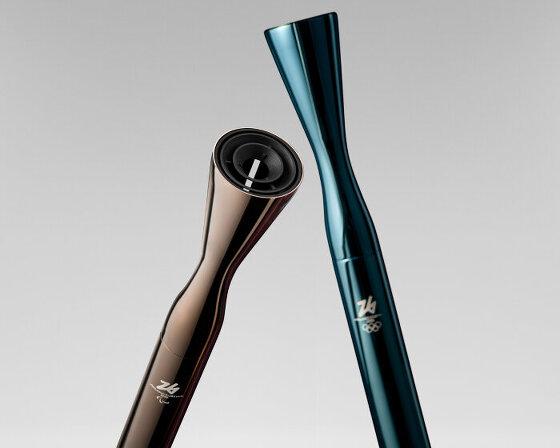‘360 °‘ kitchen
the ‘360 °’ kitchen created by german designers farziska winter, katrin sillmann ulrike sandner is a flexible mobile kitchen unit whose space is divided into different working areas for ‘cooking’, ‘eating’ and ‘cleanup’. the tower which provides users with storage shelves can be rotated 360 degrees. this allows the kitchen spaces to be accessible from all sides and adapted to user needs and preferences.
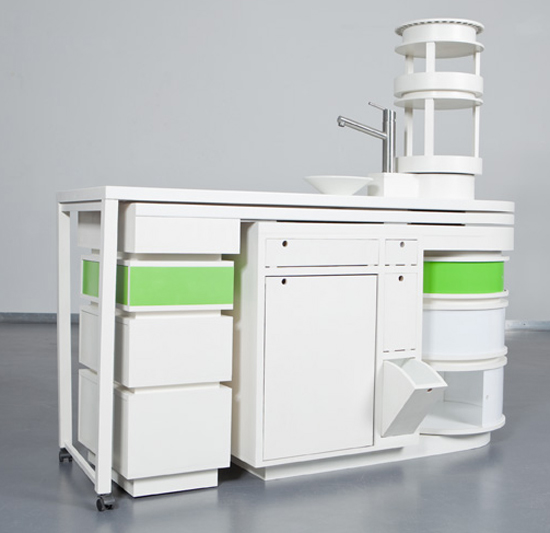
in using a pivoting point in their design, different functional areas of the kitchen are given greater accessibility. for winter, sillmann and sandner, it was key to integrate a refrigerator, sink, electrical outlet, trash cans, storage area and access to water under any condition.
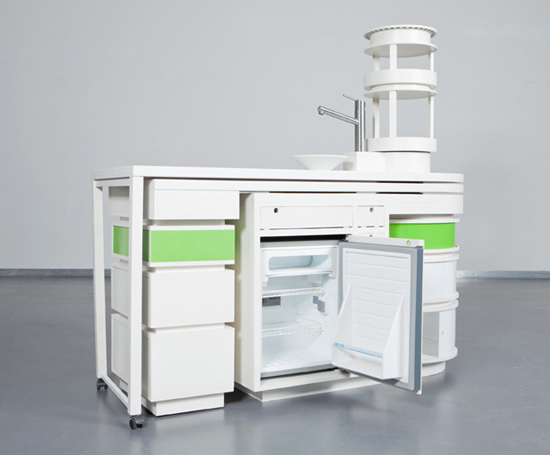 embedded mini refrigerator
embedded mini refrigerator
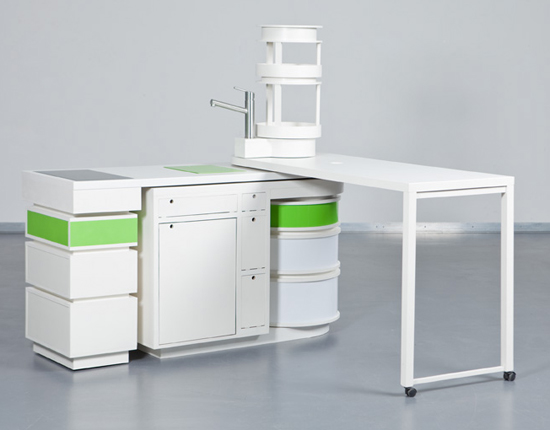 pivoting table top
pivoting table top
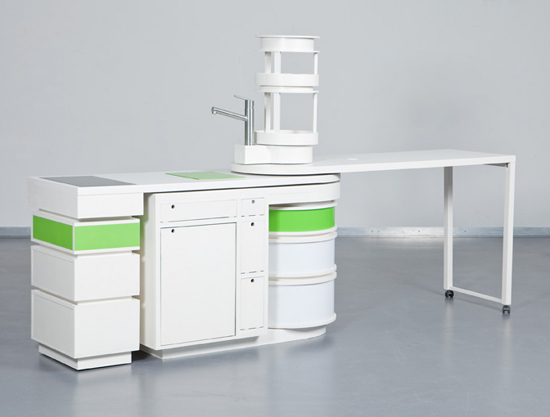
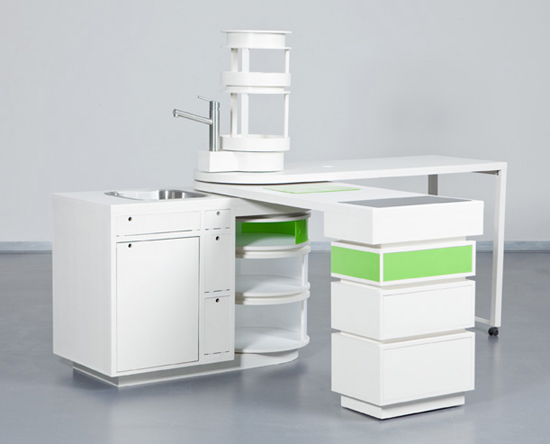
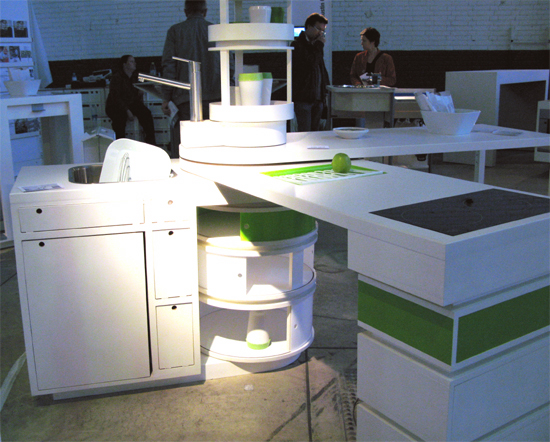 image © designboom
image © designboom
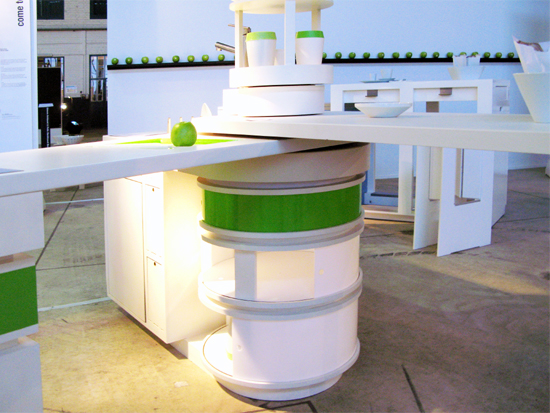 detail of pivoting tower with storage image © designboom
detail of pivoting tower with storage image © designboom
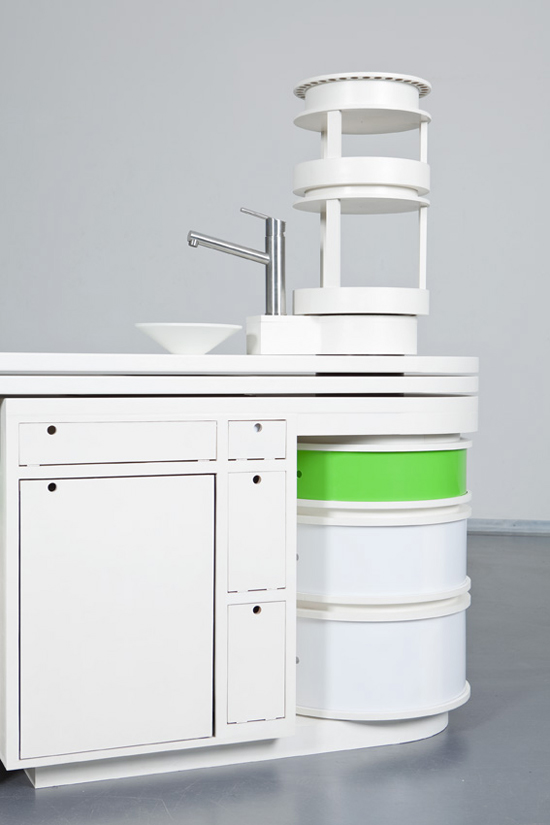 tower
tower
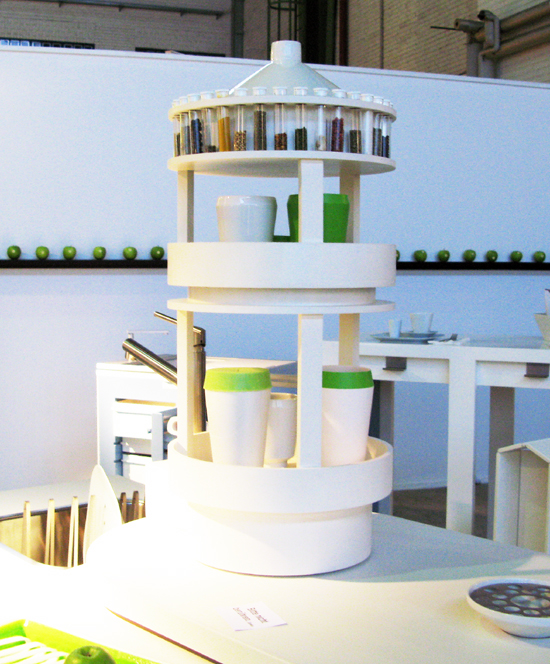 image © designboom
image © designboom
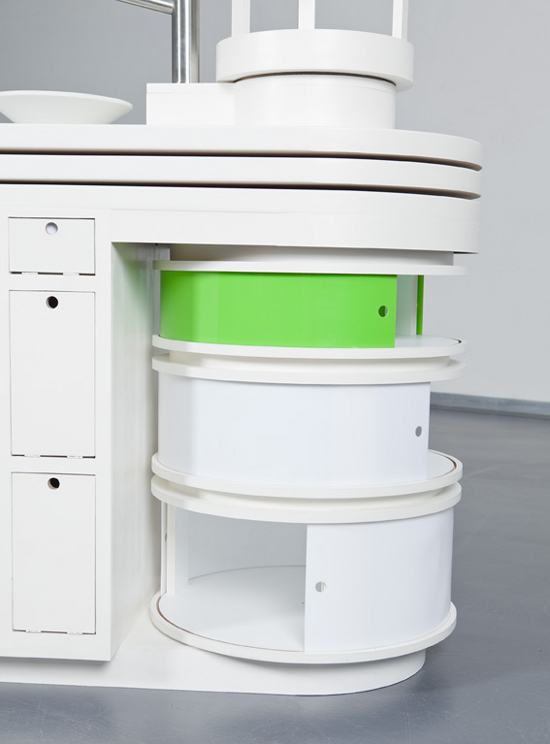
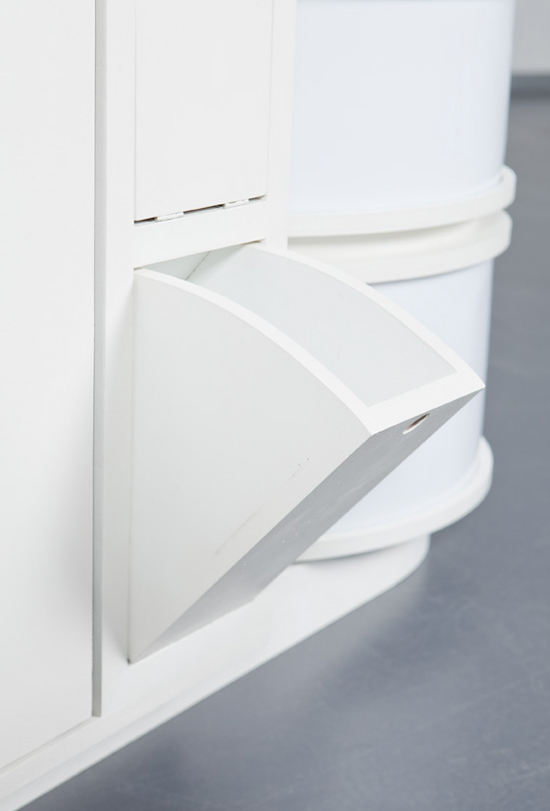
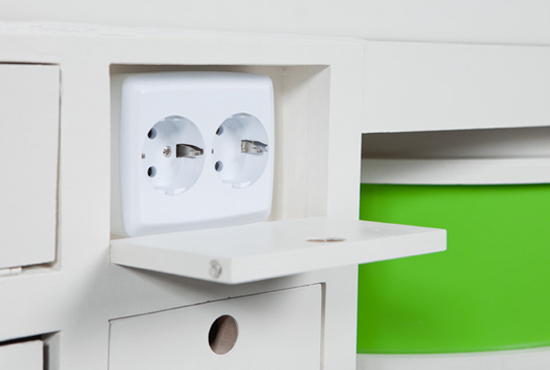 electrical outlet
electrical outlet
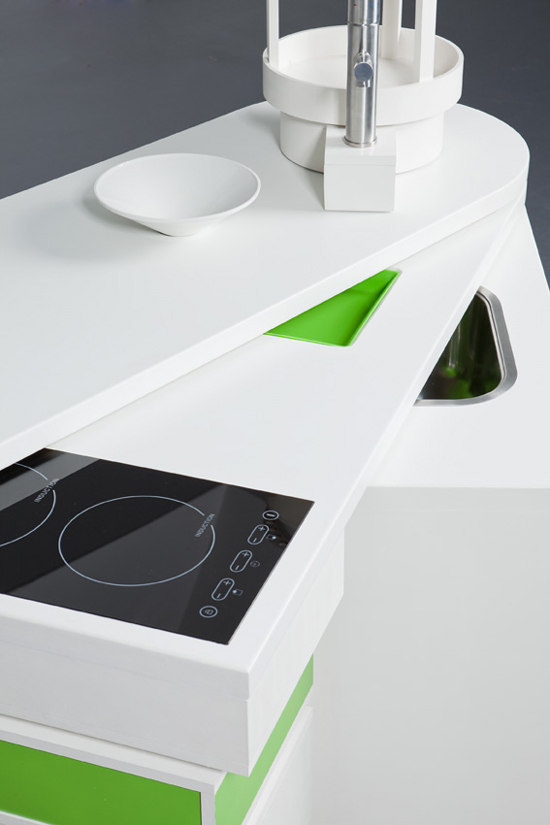 stove
stove
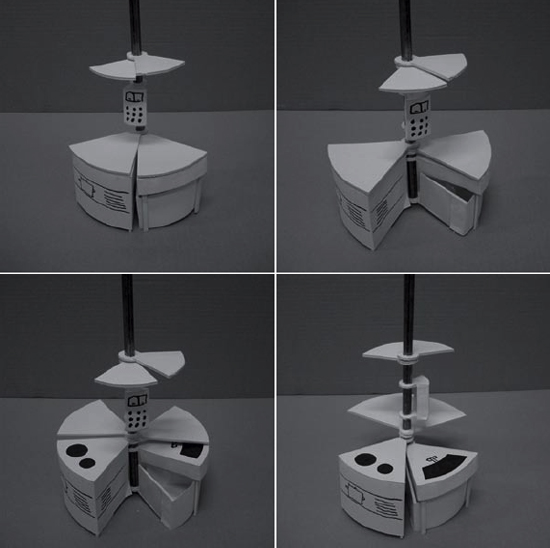
in the brainstorming stage of the ‘360°’ project, the three designers experimented with alternative themes such as a ‘kitchen tree’, another design based on the form of ying and yang, and finally a square culinary space. sticking with the concept of a ‘kitchen tree’, they built models in different variations in scales of 1:10, 1:5 and 1:1.
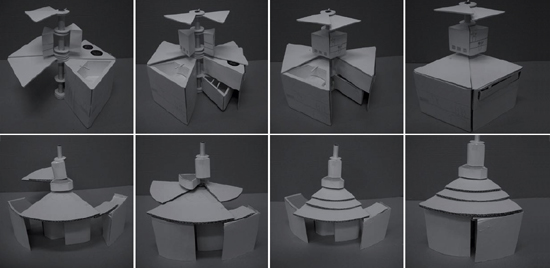
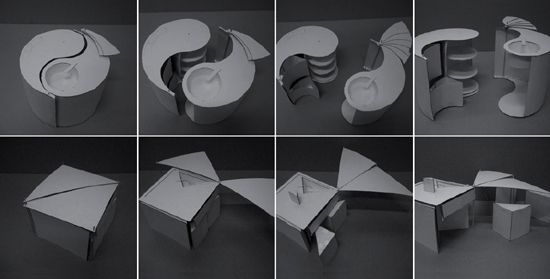
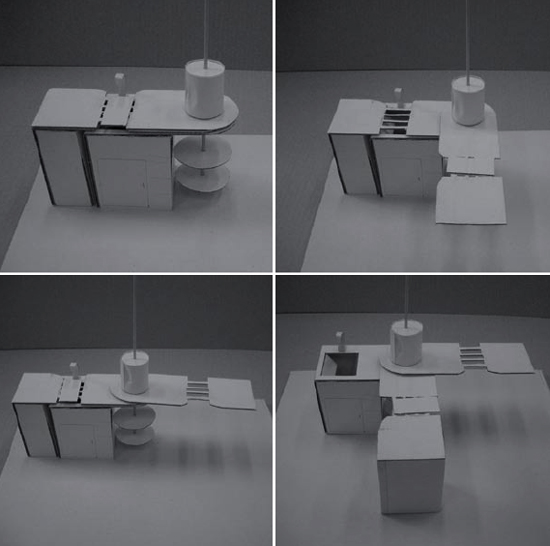
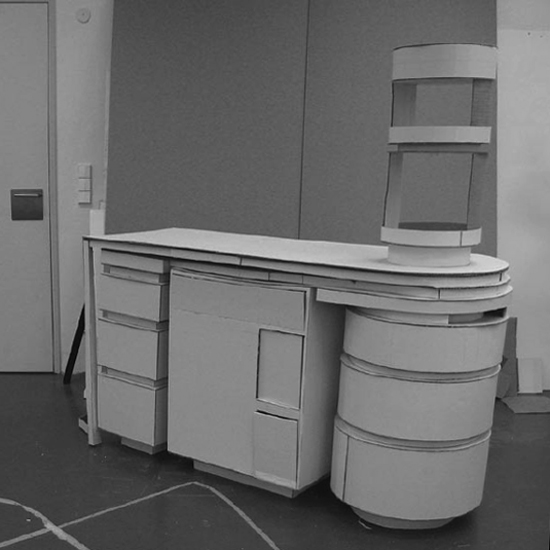 prototype of ‘360 °‘ kitchen in cardboard
prototype of ‘360 °‘ kitchen in cardboard
 production process
production process
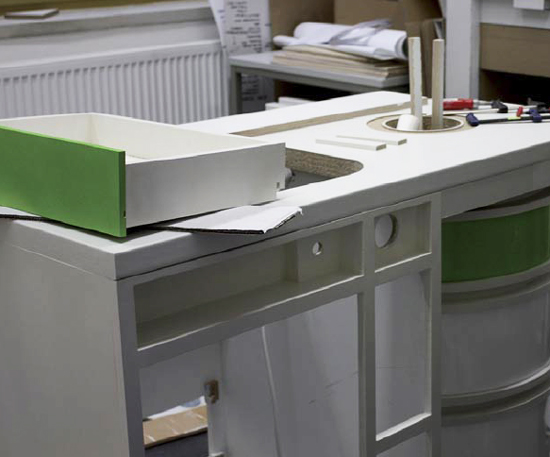 production process
production process
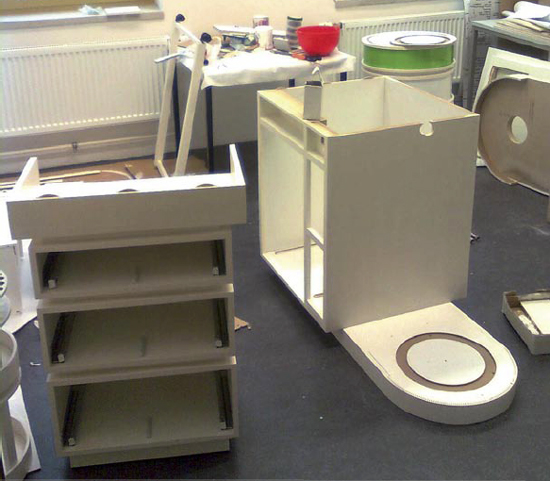 production process
production process
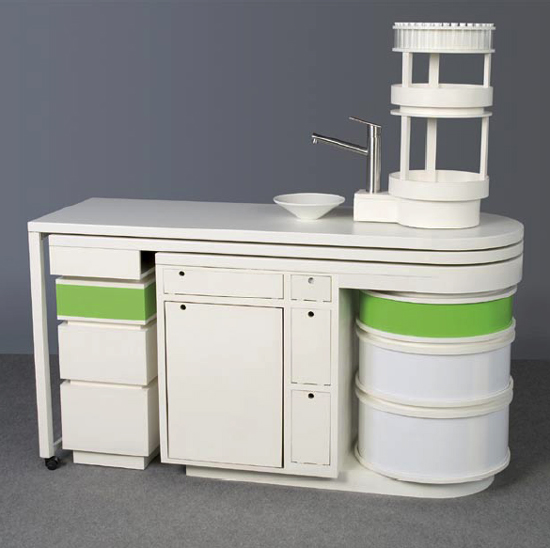
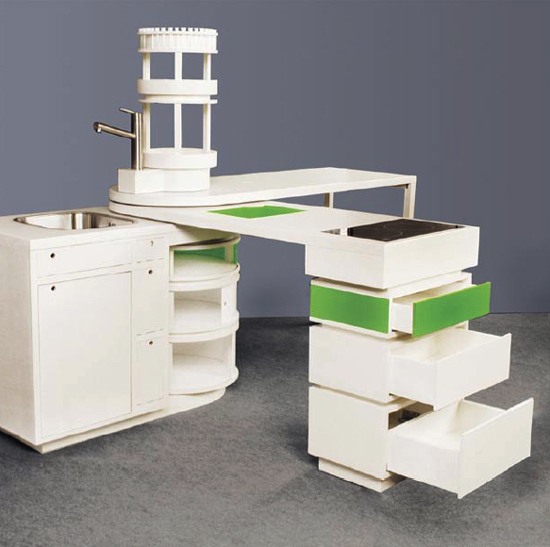
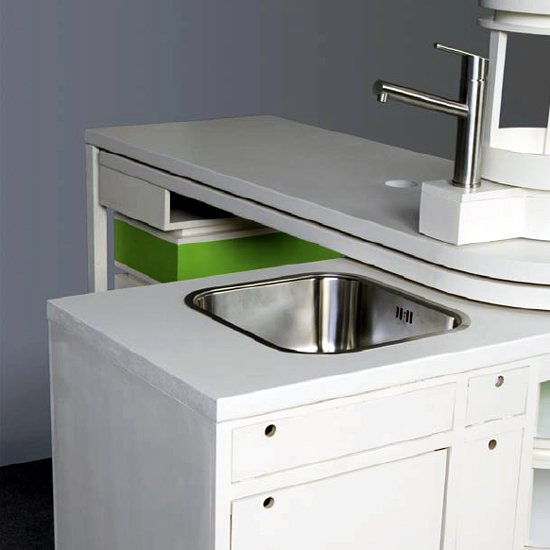
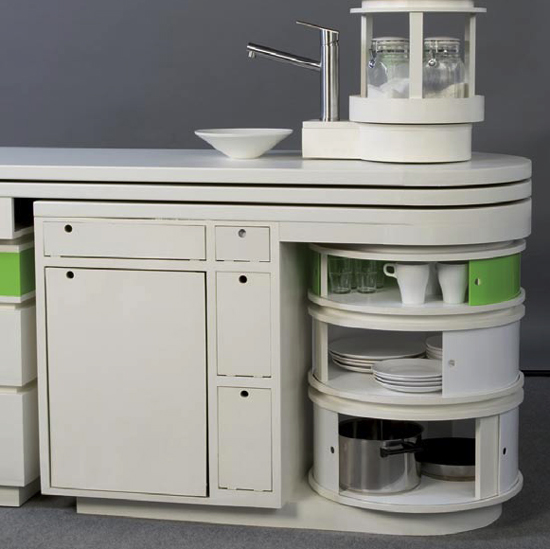
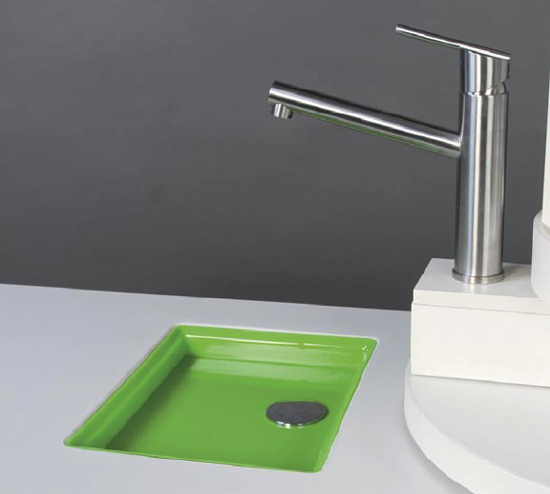
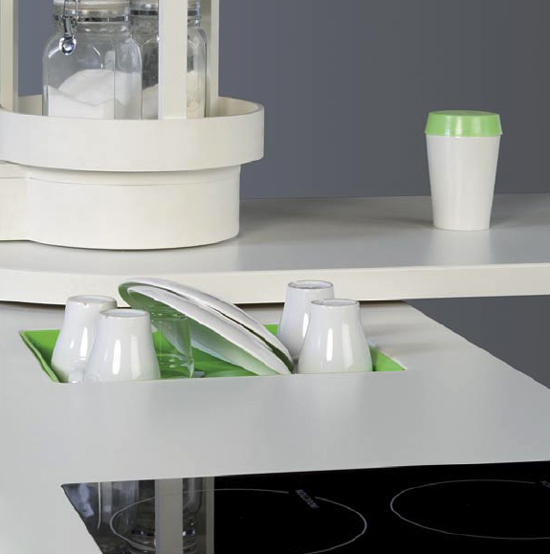
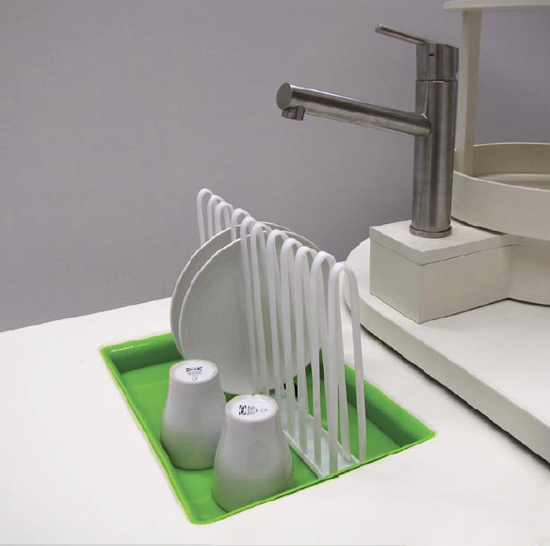 strainer / plate holders ST360 °
strainer / plate holders ST360 °
made of acrylic, this integrated rack called ‘strainer / plate holders ST360 °’ is ideal for straining vegetable while washing them or alternatively, it can be placed upright to air dry clean dishes.
 ‘cutting board SB 360’
‘cutting board SB 360’
a cutting board known as the ‘cutting board SB 360’ made from scratch resistant plastic can also be installed onto the table top.
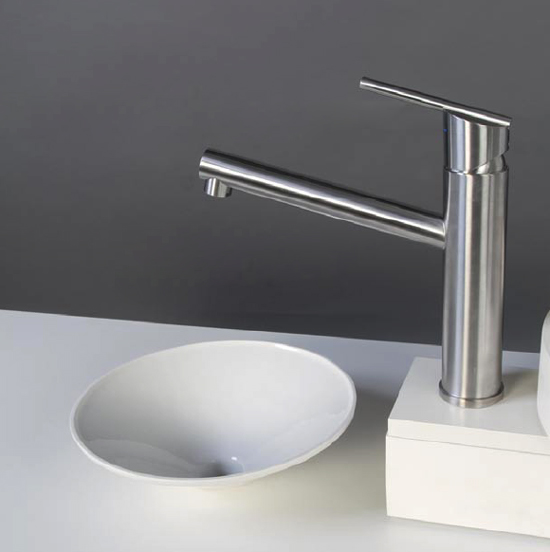
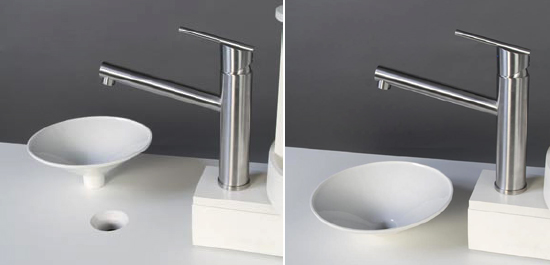
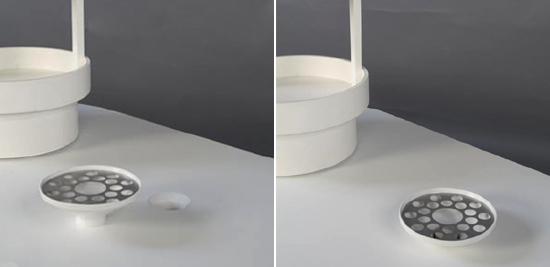
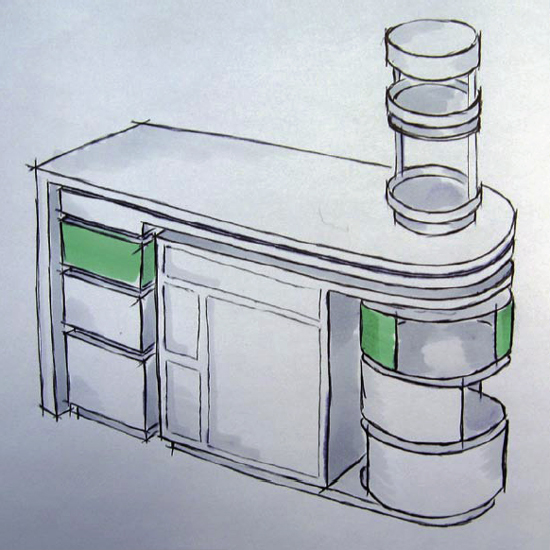 sketches
sketches
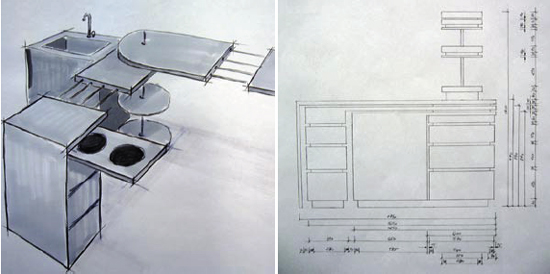 sketches
sketches
the ‘360 °’ kitchen was one of 6 projects presented by the students of burg giebichenstein: hochschule fur kunst und design halle at DMY international design festival berlin 2010. each prototype explored the theme of ‘1, 2, 3… light kitchen!’, which asked students to work with one square meter of kitchen space and reexamine the traditional ties and spatial structures of conventional culinary environments.







